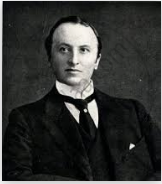Advertisements
Advertisements
प्रश्न
Match the following:
| A | B |
| 1 Kukas | (a) rediscovered India's glorious past |
| 2 Santhal uprising | (b) followers of Guru Ram Singh |
| 3 Williams Jones | (c) Ilbert Bill Controversy |
| 4 'Vande Mataram' | (d) Bihar |
| 5 Lord Ripon | (e) evoked patriotic emotions |
उत्तर
| A | Answers |
| 1 Kukas | (b) followers of Guru Ram Singh |
| 2 Santhal uprising | (d) Bihar |
| 3 Williams Jones | (a) rediscovered India's glorious past |
| 4 'Vande Mataram' | (e) evoked patriotic emotions |
| 5 Lord Ripon | (c) Ilbert Bill Controversy |
संबंधित प्रश्न
Fill in the blanks:
The assertive nationalists believed that British rule in India was not a _________ but a ______.
Match the following:
| Column A | Column B |
| 1. Dadabhai Naoroji | (a) 1905 |
| 2. Assertive nationalists | (b) separate electorates |
| 3. Partition of Bengal | (c) use of only Indian goods |
| 4. Muslim League | (d) immediate freedom from British rule |
| 5. Swadeshi | (e) early nationalists |
Answer the following question briefly:
With reference to the Indian national movement, answer the following: Examine the role of Subhash Chandra Bose in the Indian freedom struggle.
Answer the following question briefly:
With reference to Indian independence, answer the following question: What is the significance of 26 January 1950?
Fill in the blank:
“Delhi Chalo” and “Jal Hind” were two slogans given to us by _______
State whether the following statement is True or False:
It was because of British presence in India that the country was made a target for Japanese attack.
State whether the following statement is true or false:
The religious and social reform ^movement divided the Indians.
State whether the following statement is true or false:
Chauri Chaura is a place in Madhya Pradesh.
Look at the given picture.

When did the partition of Bengal take place?
Look at the given picture.

What was the real reason behind the partition.
